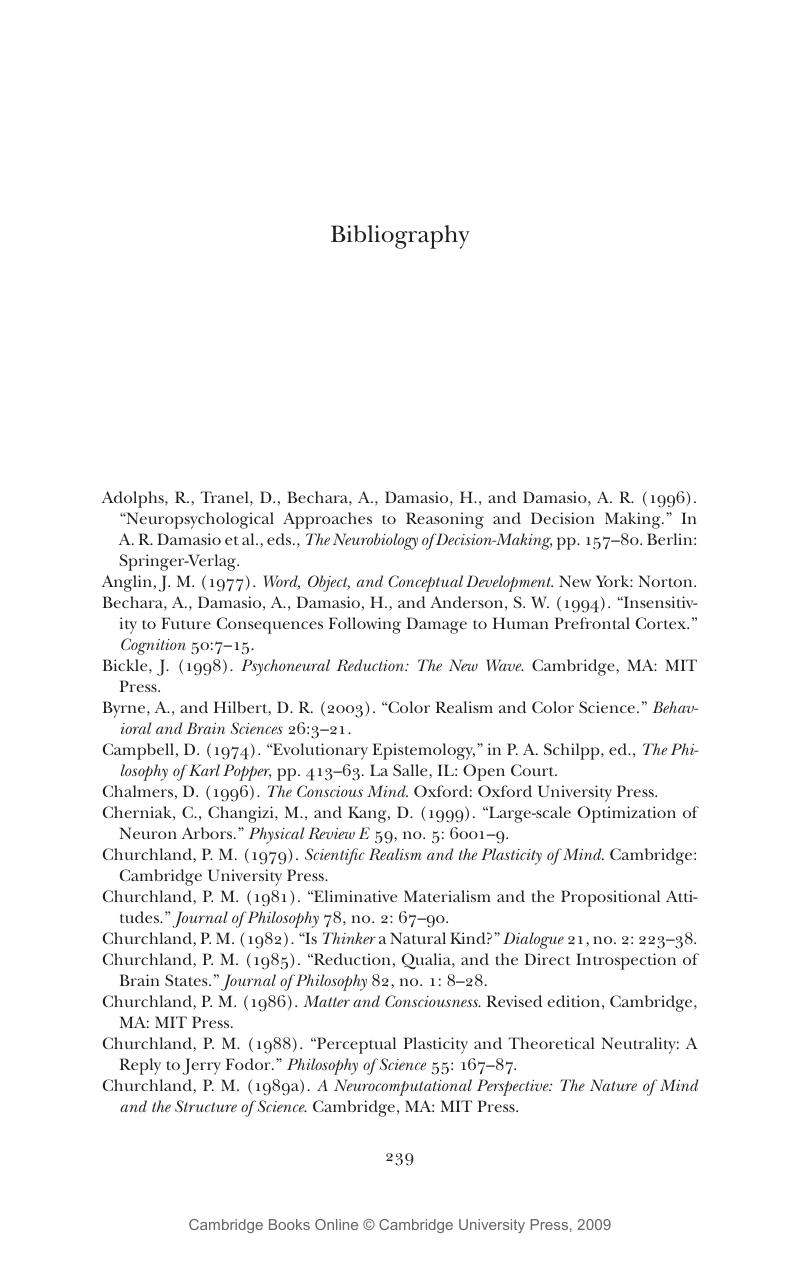Book contents
- Frontmatter
- Contents
- Preface
- Provenances
- 1 Catching Consciousness in a Recurrent Net
- 2 Functionalism at Forty: A Critical Retrospective
- 3 Toward a Cognitive Neurobiology of the Moral Virtues
- 4 Rules, Know-How, and the Future of Moral Cognition
- 5 Science, Religion, and American Educational Policy
- 6 What Happens to Reliabilism When It Is Liberated from the Propositional Attitudes?
- 7 On the Nature of Intelligence: Turing, Church, von Neumann, and the Brain
- 8 Neurosemantics: On the Mapping of Minds and the Portrayal of Worlds
- 9 Chimerical Colors: Some Phenomenological Predictions from Cognitive Neuroscience
- 10 On the Reality (and Diversity) of Objective Colors: How Color-Qualia Space Is a Map of Reflectance-Profile Space
- 11 Into the Brain: Where Philosophy Should Go from Here
- Bibliography
- Index
- References
Bibliography
Published online by Cambridge University Press: 24 July 2009
- Frontmatter
- Contents
- Preface
- Provenances
- 1 Catching Consciousness in a Recurrent Net
- 2 Functionalism at Forty: A Critical Retrospective
- 3 Toward a Cognitive Neurobiology of the Moral Virtues
- 4 Rules, Know-How, and the Future of Moral Cognition
- 5 Science, Religion, and American Educational Policy
- 6 What Happens to Reliabilism When It Is Liberated from the Propositional Attitudes?
- 7 On the Nature of Intelligence: Turing, Church, von Neumann, and the Brain
- 8 Neurosemantics: On the Mapping of Minds and the Portrayal of Worlds
- 9 Chimerical Colors: Some Phenomenological Predictions from Cognitive Neuroscience
- 10 On the Reality (and Diversity) of Objective Colors: How Color-Qualia Space Is a Map of Reflectance-Profile Space
- 11 Into the Brain: Where Philosophy Should Go from Here
- Bibliography
- Index
- References
Summary

- Type
- Chapter
- Information
- Neurophilosophy at Work , pp. 239 - 246Publisher: Cambridge University PressPrint publication year: 2007

